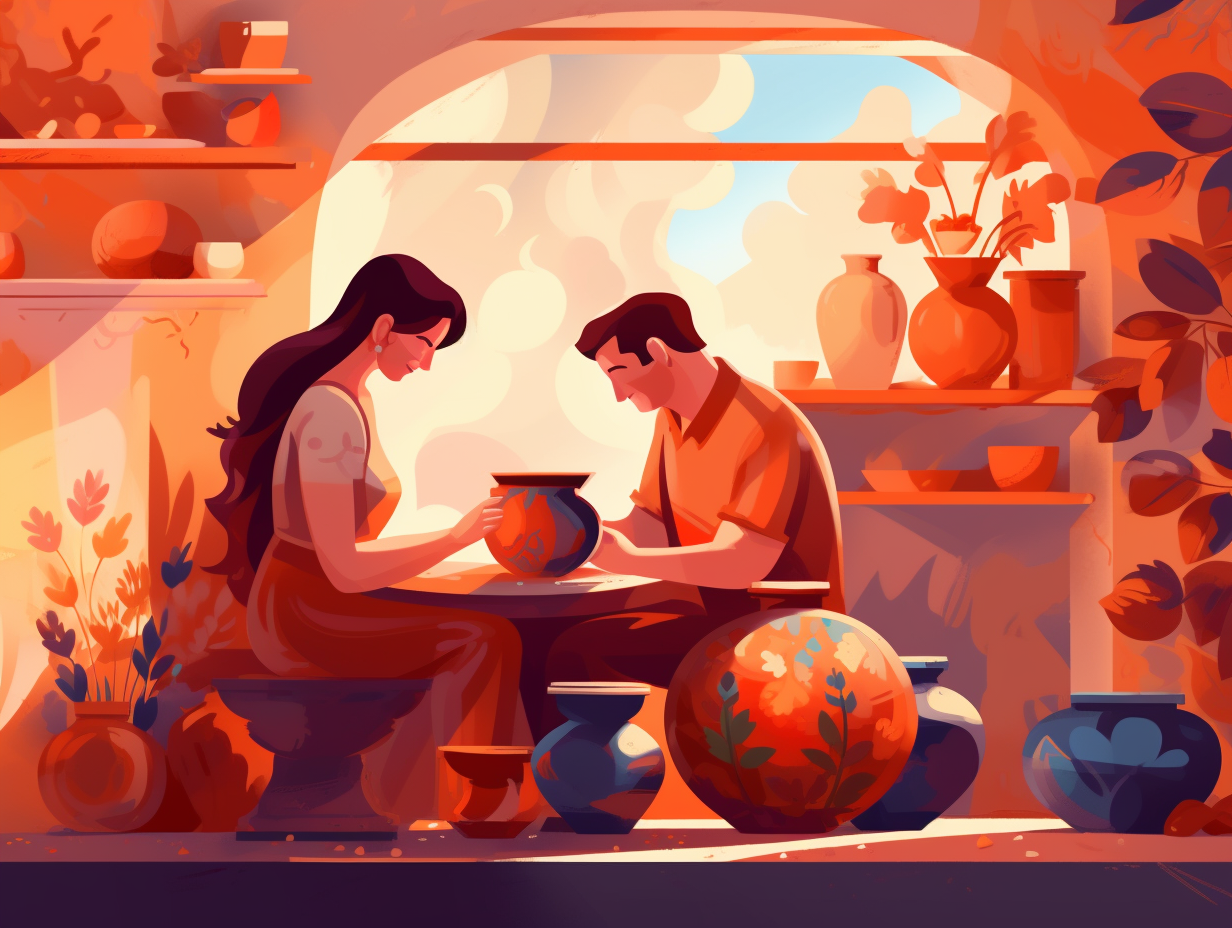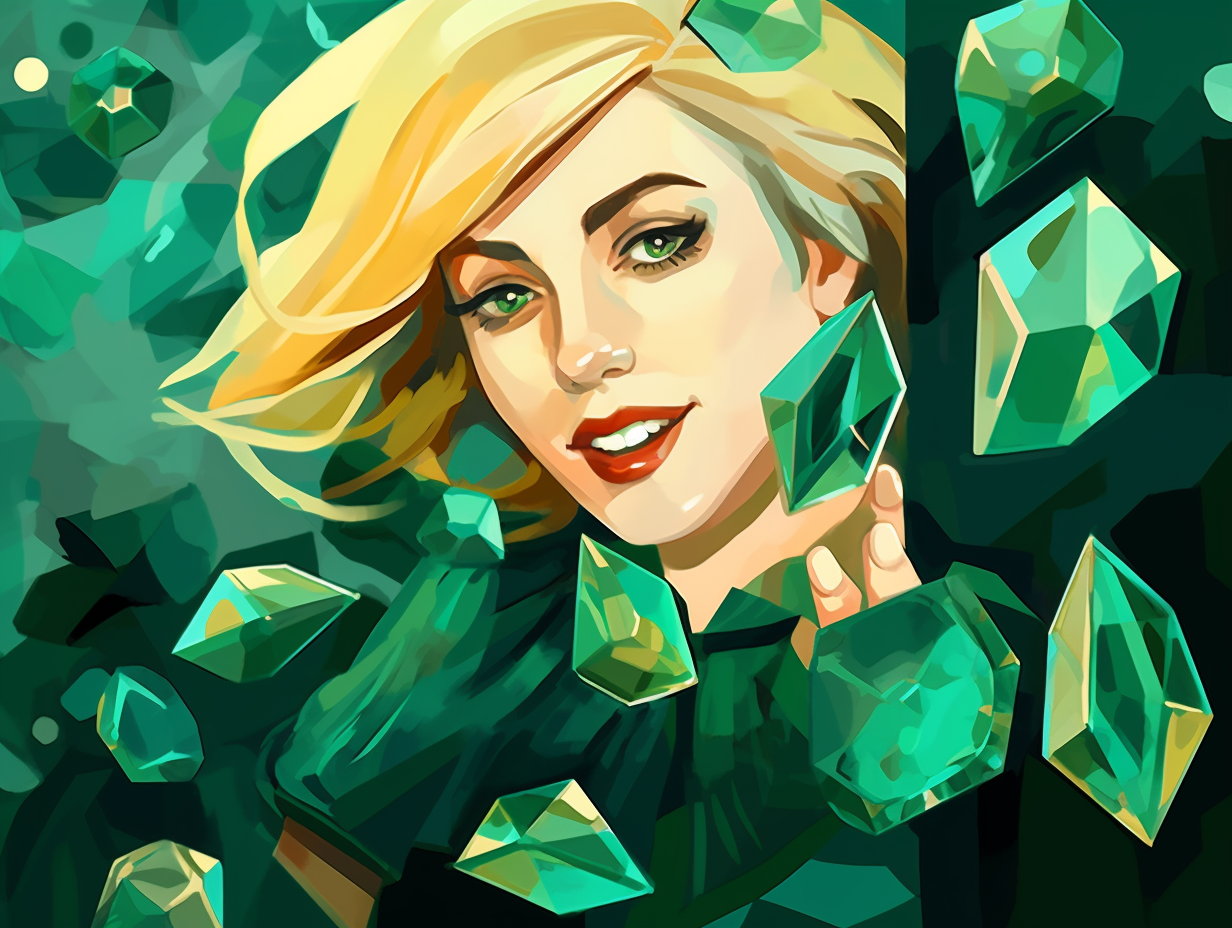Discover the Magic: Top 11 Amazing Fun Facts About Clay You Never Knew!

1. Clay: The Natural Facelift
Who needs a spa day when you've got dirt? Mother Nature's all-natural facelift, clay, has been stealing the beauty thunder for centuries: When mixed with water, clay expands and draws out toxins, while replenishing the skin with essential minerals like zinc and magnesium. Bentonite and kaolin clay are the dynamic detoxifying duo – with Wyoming's finest bentonite being the powerhouse of purification, and kaolin gently tickling the fancy of sensitive or dry skin types. So go ahead, get dirty in the name of beauty – cleansers, toothpaste and bath soaks are patiently awaiting their clay-over.
Source => trualchemyskin.com
2. Clay Fights Skin Infections
Here's a prescription you won't find at your local pharmacy: "Doctor, my skin is infected! Shall I try some ancient mud?" Turns out, Fe-smectite-loaded French green clay may be just what the doctor ordered: This natural substance not only has antibacterial properties, but it can potentially help treat skin infections, including the dreaded flesh-eating disease caused by Mycobacterium ulcerans. But beware, not all clays are created equal, and only a select few possess these powerful healing properties!
Source => ncbi.nlm.nih.gov

Did you know pottery took a spin before wheels were even invented? Discover how a 3500 BCE invention revolutionized the art of molding clay and find out why it beat wheels to the game! 🏺🌀
=> Fun Facts about Pottery
3. Earthenware Clay: Colorful Pottery
From the clay that brought you pottery's greatest hits such as the Brown Beauty, Red Rogue, Orange Odyssey, and Grey Galore comes a fun fact of earth-shattering magnitude: wet earthenware clay, the oldest trick in the pottery book, boasts various shades of brown, red, orange, and grey due to its location, soil ingredients, and climate, while a firing session transforms it into tones from dashing brown, mystical orange, to valiant red, the ever-classy grey, and the unsung hero - white.
Source => potterycrafters.com
4. Eco-Friendly Bricks from Broken Ceramics
When life gives you broken ceramics, make eco-friendly bricks: Waste ceramic and brick powder can replace up to 27% of clay in brick manufacturing without affecting their physical properties and durability, reducing landfill waste and conserving natural resources.
Source => mdpi.com

5. Oregon's Painted Hills: A Clay Masterpiece
Who needs a rainbow when you've got the Painted Hills of Oregon, Mother Nature's remarkable masterpiece without a single brushstroke: The vibrant layers of colors in the hills result from a blend of elements like Aluminum, Silicon, Iron, Magnesium, Manganese, Sodium, Calcium, Phosphorus, Titanium, Potassium, Oxygen, and Hydrogen, found in mudstone, siltstone, shale, and lignite deposits, and they signal the ever-changing climate and earth's composition from millions of years ago.
Source => en.wikipedia.org
6. Fresh with Clay Deodorant
When life gives you clay, make deodorant! Using a cherry on top, a splash of bourbon, and a hint of pear, Zion Health creates a symphony of unorthodox scents to keep you fresh: Their natural deodorant blends the power of bentonite clay, a moisture and odor buster, without resorting to aluminum or parabens— now that's the cherry on top!
Source => okilovethis.com
7. Clay: Moisture Magnet
If clay were an online dating profile, it'd boast about its astonishing ability to make things moist – but fear not, it's not as scandalous as it sounds: This fine-textured soil component with its multitude of tiny particles can hold more water than its coarser counterparts, playing a crucial role in controlling soil's water-holding capacity and greatly influencing water infiltration and permeability.
Source => noble.org
8. Clay's Magnetic Personality
You might say clay has a magnetic personality – it's the life of the ion party, hosting all those bonus atoms looking to mingle with some solids: Clay minerals have a large surface area, enabling fast ion exchange between solids and surrounding solutions through adsorption, which ranges from weak van der Waals to strong chemical bonds. This makes clay a star player in geological and waste treatment processes.
Source => clay.uga.edu
9. Fire Clay: The Ultimate Heat-Resistant Material
Ever wished to throw a pizza party in the belly of a volcano? Well, fire clay's got your back: this heat-resistant clay, often found deep in coal measures, is perfect for making fire bricks and metalworking utensils that can withstand temperatures up to 1,515 °C (2,759 °F). Talk about bringing the heat!
Source => en.wikipedia.org

10. Cleopatra's Clay Skincare Secret
Before she made "wrapping yourself like a mummy" fashionable, Cleopatra was a connoisseur of clay-based skincare products, craving complexion perfection for her precious pharaoh face: In fact, clay has been used for millennia to treat skin infections and rejuvenate one's natural glow, with benefits ranging from decongesting pores and gentle exfoliation to reducing acne without harsh side effects – all while maintaining your skin's delicate microbiome. Clay mask skin benefits simply seem to be an ancient beauty secret that keeps rivaling modern trends as it remains versatile, customizable, and as timeless as a queen's sarcophagus!
Source => shoprootscience.com
11. Mesopotamia's Swanky Clay Cylinder Seals
Rolling with the big wigs of ancient Mesopotamia: Cylinder seals, crafted from clay around 3500 BCE, served as the VIP card of their time – providing legal signatures and proving ownership for officials and merchants alike. These swanky trinkets, when rolled across moist clay, left a lasting impression that only the sun's hot bakery could preserve, showing us just how far the social club of trade networks reached back in the day.
Source => gallery.library.vanderbilt.edu
Related Fun Facts




















